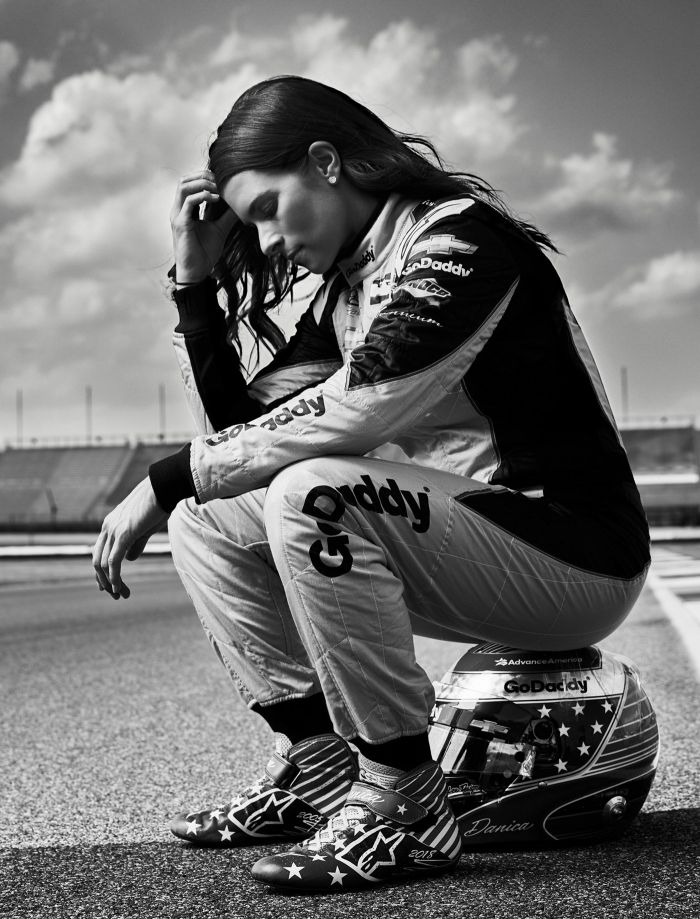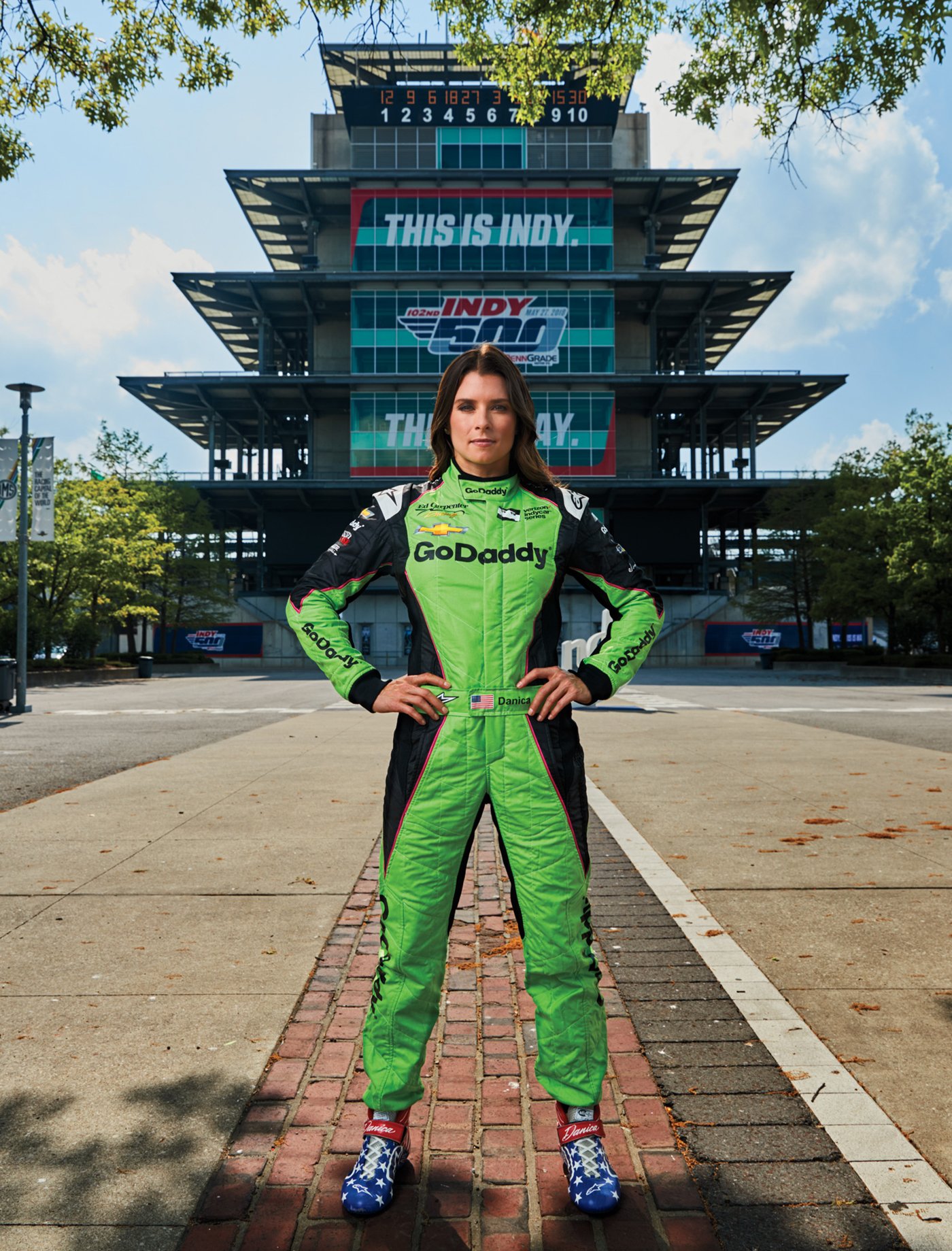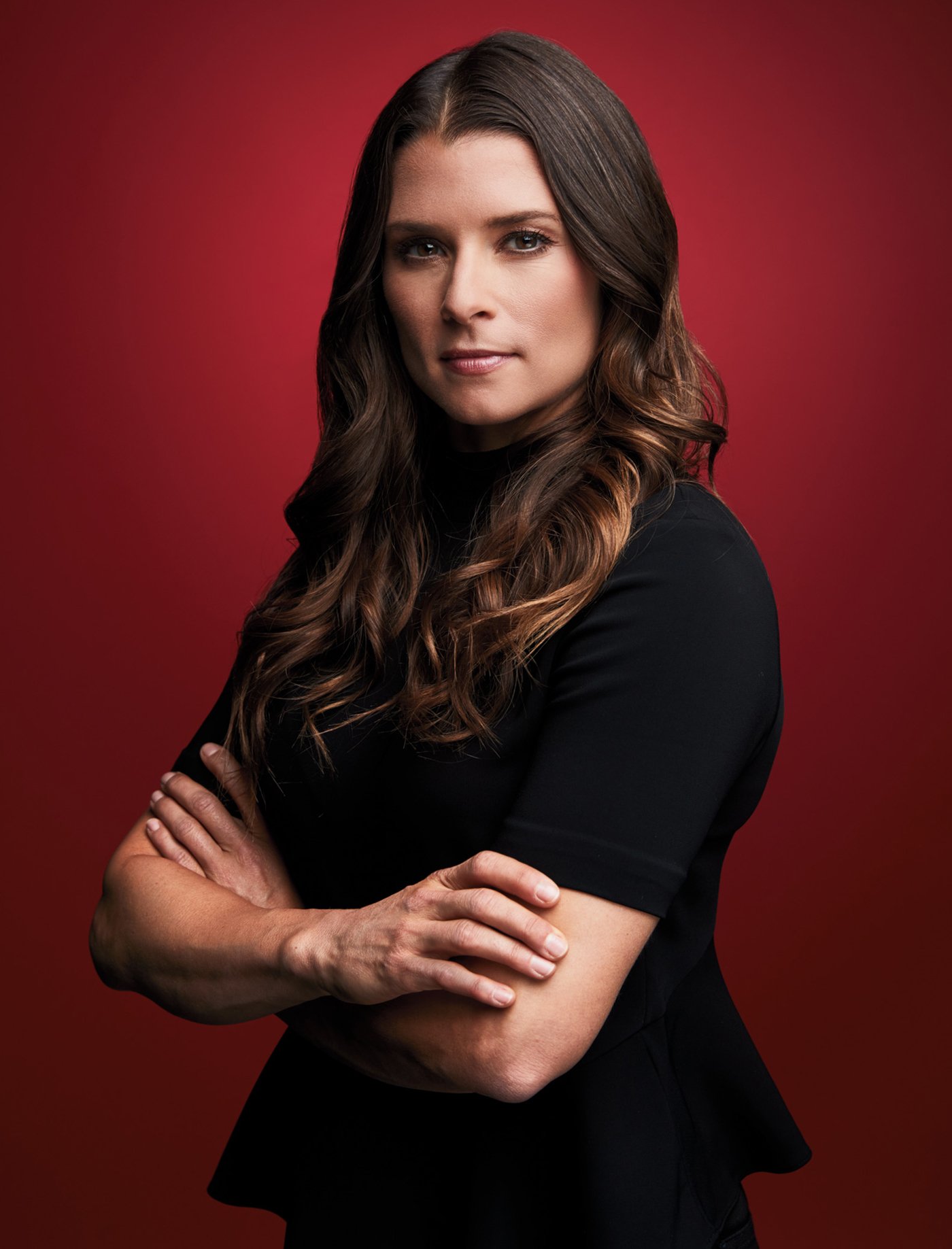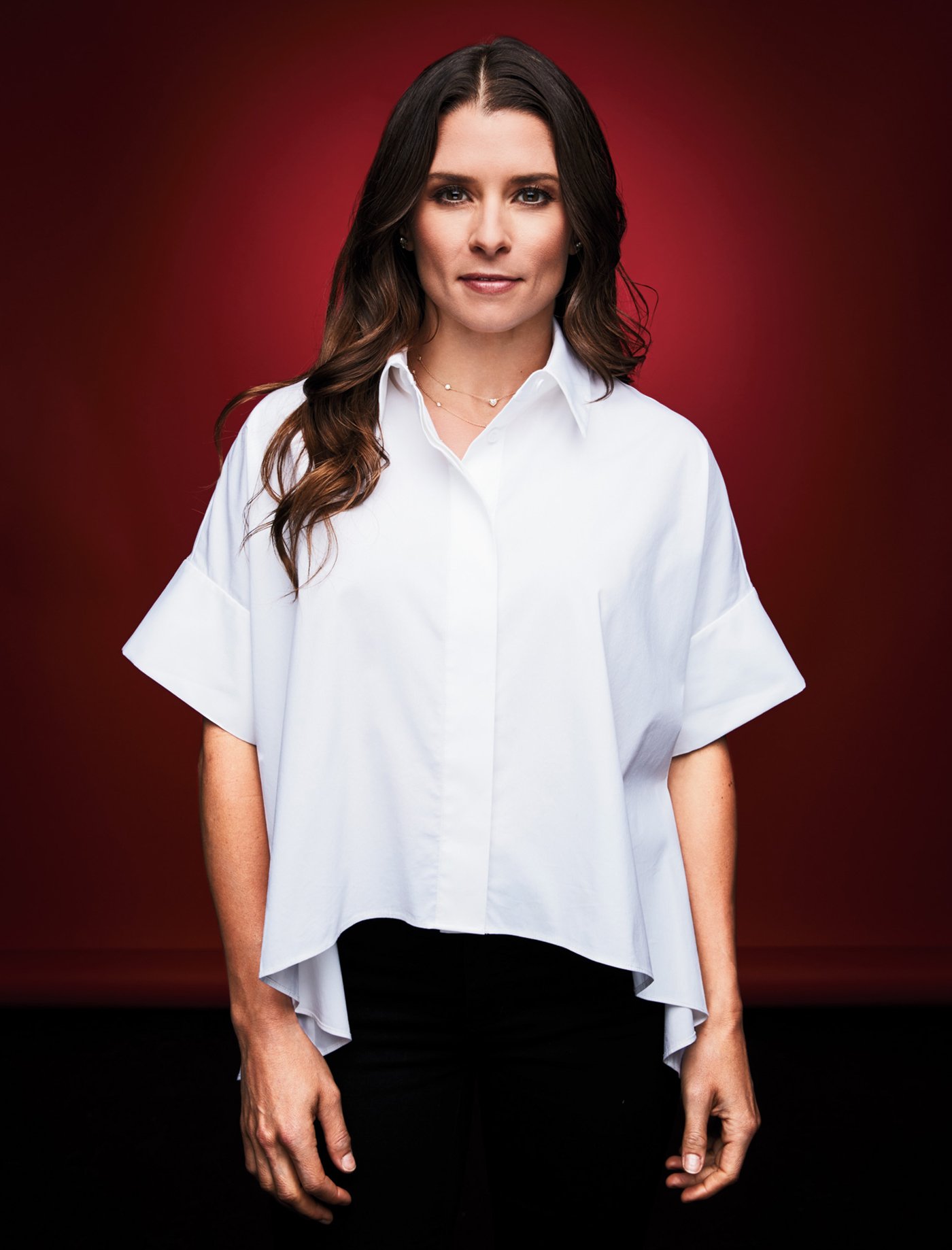Danica Patrick Spent Years Preparing to Retire -- by Laying the Groundwork for a New Career

How do you trade the comforts of a job you know well for the unknown of entrepreneurship? Just-retired race car driver Danica Patrick is finding out.
June 27, 2018 16 min read
Opinions expressed by Entrepreneur contributors are their own.
This story appears in the July 2018 issue of Entrepreneur. Subscribe »[1][2][3]
In the weeks leading up to Danica Patrick’s final IndyCar race this past May, she spent her time the way most drivers do -- practicing on the Indianapolis Motor Speedway and running through details with her team. But with about two weeks to go before she’d suit up professionally for the last time, she is summoned to do a little salesmanship. A group of teenage girls has been assembled at the speedway’s main building, and NASCAR has asked Patrick to give them a pep talk about the exciting possibilities of a career in professional auto racing.
Related: How Successful People Stay Productive and In Control[4]
Who better for the job? Almost nobody, really. Patrick is one of the few women to find success[5] in motorsports, a pursuit -- and a business -- long dominated by men. From her spectacular run in open-wheel racing, where she became the first, and still only, woman to win an IndyCar Series race, to her transition to stock-car racing, to her recurring pit stops to star in a run of head-turning Super Bowl ads for internet services powerhouse GoDaddy, Patrick has been one of the most recognizable figures in racing for the past 13 years.
And yet, as she stands now at the front of a conference room, looking out at this gathering of hopeful adolescent faces, Patrick can’t help veering off script. “Find something you actually frickin’ like to do!” she advises the junior high schoolers, who giggle in response. Maybe that’s auto racing, but maybe -- probably -- it isn’t. “Be honest[6] with yourself about ‘I hate this job, I’m miserable.’… Find something you love.” A minute later, she was gone, speed walking back to the garage trailed by a cargo-shorted throng of autograph hounds, to practice the sport it turns out she doesn’t frickin’ like to do anymore, and maybe never did.
This fundamental truth didn’t really dawn on her until a year ago, she says. That’s when the snack brand Nature’s Bakery ended its three-year, $46 million deal to back Patrick’s team, Stewart-Haas Racing[7], after just one season. Patrick took the news as another in a string of unwelcome reminders that for all her visibility, she had never been fully in control of her own destiny[8]. She felt vulnerable, at the mercy of sponsors, owners, mechanics, engineers and teammates, even when she was the one behind the wheel. Still, she was a pro. And for a time, she had held out hope that the loss of her sponsor was just a little speed bump. “My gut instinct was that there had to be a solution,” she says. “But as time went on, I thought, Hmmm; maybe I don’t really care?” Maybe the world was telling her it was time to move on. “I was just over the stress[9] and the judgment,” she admits. “I wasn’t having fun. And life’s too short. I mean, really: Who cares?”
Success often has a downside. It can make people risk-averse. Their instinct is to hold on to the thing they’re good at -- reluctant to move on or to reinvent themselves out of fear that they won’t replicate their original achievement. It can be scary leaving the comforts of the familiar for the untested road ahead. Entrepreneurs of all kinds worry that they can’t win twice.
But in this, Patrick has an advantage. As racing fans know, she’s never fully hewn to the traditions of racing. She’s always chosen her own path. And that has given her a particular kind of freedom: She was always willing to think beyond racing, and to pursue opportunities some of her peers may not have. As a result, she was fully prepared for this moment, long before she knew exactly when it would come.
Image Credit: Nigel Parry
You’ve got two basic modes when you’re racing the Indy 500. You’re either running flat out, accelerator pinned to the floor, propelling you at speeds of upwards of 230 mph down a straightaway or you’re “lifting,” easing up a touch with your right foot as you bank into a turn.
Related: 6 Tips for Taking Back Control and Performing Better[10]
For the better part of her career, Danica Patrick has been running flat out. She was introduced to the sport with a go-kart race at age 10, when a brake pin came loose and sent her sailing head-on into a concrete wall. She bounded from the wreck unscathed and undaunted. After that, she just kept right on gunning it, hauling ass, fierce and implacable.
But along the way, she has done some lifting as well, easing back just enough to look around and take stock of the opportunities around her. It’s an instinct Patrick says she picked up from her parents. When she was young, her dad, T.J. Patrick, launched a small business, a commercial glass company in Rockford, Ill. He ran the shop, and her mom, Bev, did the bookkeeping. It wasn’t easy -- “I worked till midnight every night, seven days a week,” T.J. recalls -- but the family had an apartment upstairs, and they made it work. Eventually, they decided to diversify, opening an oil change garage, a coffee shop and a drywall company, none of which got much traction. “The glass company was the moneymaker,” T.J. says.
Patrick says her parents’ willingness to take risks inspired her to do the same. “That seed was planted a long time ago,” she says. “The idea that owning your own businesses is totally possible and not abnormal, and if you have an idea, run with it.”
That impulsive streak may have informed her decision, in 2003, to pose provocatively across the hood of a hot rod in a red leather bustier for the lad mag FHM. The shoot was controversial -- panned by female racing legend Janet Guthrie, among others. But rather than detracting from her career, the instant fame it generated actually helped her to become a more successful driver. “It just brought more attention,” she explains, “and more interviews led to sponsors benefiting from the exposure.” Which in turn helped create a reliable financial cushion, allowing Patrick to focus on driving rather than hustling. (And Patrick would come to say the shoot was personally satisfying, too, allowing her to highlight a side of herself she’d spent years suppressing. “I had always been afraid to look too girly,” she says, “because I wanted to be taken seriously and make it as easy as possible for people to listen to me as a driver and hear what I’m saying.”)
Her most prominent sponsor would become GoDaddy, which signed her after watching her lead 19 laps of the 2005 Indy 500, and their long-running and lucrative partnership would start at an auspicious time. Everyone and their aunt was slapping up a website, and the company was embarking on an extraordinary marketing campaign designed to sex up the seemingly humdrum field of domain-name registration. In one ad, for example, three geeky guys discover the power of having their own website -- which enables them to pull up a video of Patrick taking a shower. “Steamy!” one of the guys cheers.
In all, she taped more than 20 ads for GoDaddy, 13 of which aired during Super Bowls, generating plenty of attention, both good and bad. Patrick is quick to note that she typically played the straight man, wearing a racing-style leather suit and leaving the risqué stuff to the other so-called “GoDaddy girls.” But the experience taught her another valuable lesson about business. “We were both trying to get people to know our names,” Patrick says, “and sometimes you use more controversial tactics to get attention.”

Image Credit: Nigel Parry
The dividends of raising your profile can also open up more unexpected opportunities. One day back in 2006, more than a year after her historic Indy 500 performance, Patrick took a life-altering trip to Napa Valley. She stood with a glass of white wine in her hand, taking in the terraced vistas from a Howell Mountain vineyard. “You know, you’re looking down south toward San Francisco and the fog is just rolling down into the bay, and I remember thinking it was so beautiful and cool, and how amazing it would be to have something like this someday.”
Two years later, she decided she wanted in. There are plenty of easy ways to enter the wine business, as celebrity winemakers from Yao Ming to Drew Barrymore could surely attest. You can, for instance, purchase bulk juice, bottle it up, and slap on a label, the way so many wannabe Mondavis do. Or if you’re really committed, you can purchase a vineyard that is already producing grapes. Both options lead to quick wine sales. But Patrick did neither. She settled on land that needed work -- an unspoiled 24-acre plot with promising soil, good exposure and massive boulders that would need to be torn out, crushed and hauled away before anyone could start making wine.
“She wanted to do it the correct way from day one,” says Tracy Smith, the general manager of what has become Patrick’s Somnium Wine (named after the Latin word for “to dream”). “She was all-in.”
Related: Your Brain Doesn't Want to Change: 5 Ways to Make It[11]
She bought the property in 2009 and wouldn’t sell a bottle until 2017. And yes, certainly, those are the advantages of having cash on hand. But the principle of it is more important: In 2009, Patrick still had many years left to race. By starting a company this way, she was effectively creating a counterbalance -- a business that would ramp up as her racing career wound down. It’s a side hustle that also serves as a psychological cushion, and one answer to that big question successful people face. How do you leave something comfortable and familiar, and enter into the unknown? Answer: By proving to yourself that you can do more than whatever is in front of you. By building the bridge out before you’re even ready to step onto it.
Patrick oversaw the design of her wine’s label, insisting on a little red dot on the front and back, and another on the top of the capsule. It’s meant to evoke the “You are here” indicator on a map. It’s a reminder to be in the moment right where you are.

Image Credit: Nigel Parry
By 2010, Patrick was often described as the most visible and highly paid IndyCar driver, and then she stepped up onto American racing’s main stage: NASCAR. But soon after making the move, despite selling a ton of shirts, hats and other swag, she grew increasingly frustrated with the merchandise deals she was being offered. “Drivers make very little money on their merchandise,” she says. “There’s just too damn many hands in the cookie jar. It’s ridiculous.” Tired of putting her name on apparel and then seeing the proceeds get carved up by sponsors, teams and racetracks, she made it her mission to “figure out how to do something on my own.”
Her first stop was G-III Apparel Group, the clothing giant that handles manufacturing for everyone from Calvin Klein to Ivanka Trump. “Her management team came to us and said, ‘Danica wants to do a clothing line,’ ” recalls David Kupferberg, G-III’s executive vice president for sales, “and we said, ‘Great. A lot of people want to. It’s kind of a thing.’ ”
Despite his skepticism, Kupferberg took the meeting. “And she blew us away,” he says. “She was smart, she was on topic and she had this vision. We were like, whoa.”
Patrick came up with the branding, a thunderbird logo and the overall direction: high-performance clothing that was also comfortable enough to wear on the weekends. She called it Warrior by Danica Patrick, a nod to the Native American mythos she’d been exposed to living in Scottsdale, Ariz., as well as to her own tenacity. “She has a really solid point of view. ‘This is what I like; this is what I don’t like,’ ” Kupferberg says. Though Patrick knew next to nothing about the apparel industry, she buckled down and educated herself on fit, fabric and construction. Warrior was introduced on HSN in 2017, making use of Patrick’s celebrity. At launch, sales exceeded all expectations by 50 to 60 percent, Kupferberg says.
Spot an opportunity, and take it on fully: This has become Patrick’s pattern. In fact, that same year, Patrick released a book called Pretty Intense that lays it all out. The book “encompasses my core beliefs and the things that are most important to me,” she says: It’s a diet, fitness and mental-conditioning plan for which she created, tested, and wrote the workout program, developed all the recipes -- from the curry turkey burgers to the chocolate chia pudding -- and personally photographed the results. And while the book has a spiritual vibe, quoting Mahatma Gandhi and Deepak Chopra and urging readers to “be the light” and “develop a relationship with your all-knowing soul,” its overall message boils down to three words that define entrepreneurs.
“You better work!” she writes.

Image Credit: Nigel Parry
It’s two weeks to race day, and Patrick is on the Indianapolis Motor Speedway’s infield, where her team has parked her triple-slide luxury motor home. It features four flatscreen TVs, a full kitchen with an espresso machine and a built-in grill and picnic table. Shoes are forbidden inside. After her final race, she’ll likely spend a lot less time in here -- now that she’ll be able to hang out with her dogs, a Belgian Malinois named Dallas and a miniature Siberian husky, Ella, back at her home base in Scottsdale. She’ll cheer on her boyfriend, Green Bay Packers quarterback Aaron Rodgers, as the NFL season gets under way. She’ll do some investing -- appearing as a judge on Entrepreneur’s online show Elevator Pitch. And she’ll savor the occasional glass of wine. “I often think, you know, they’ll never make any more of this 2014 cabernet,” she says, picking a bottle of Somnium from the table. “That’s all there is! It’s unique. That’s why I always say, you only open the bottle when you know you’re going to finish it.”
Most of all, though, Danica Patrick will slow down, if only for a spell, to contemplate the red dot that marks her place in the universe, and live in the moment.
Related: 10 Truths for Making Change Successful[12]
Though that’s for later. Today her green, GoDaddy-branded race car is waiting for her -- the result of one final sales pitch to her longtime sponsor. Patrick and GoDaddy had actually parted ways in 2015, after a decade of marketing magic. By the final few years, Patrick’s GoDaddy ads had shifted from sexual to sophisticated. “We both realized we needed to get attention for something deeper and more meaningful,” she says. But the relationship ran its course. Still, when Patrick decided to mark her retirement by competing in one last pair of races she billed as the “Danica Double” -- driving NASCAR in the Daytona 500 followed by a return to IndyCar in the Indy 500 -- she worked to lure GoDaddy back in one final time.
“Danica negotiated that deal,” says Barb Rechterman, GoDaddy’s longtime CMO. “Usually it’s the manager who’s presenting to us. That didn’t happen here. We had a great multi-hour conversation, and her manager didn’t say two words.”
That’s what the end of one career will leave you with -- the experience you didn’t have at the beginning. Patrick wouldn’t have made that pitch herself when she first signed with GoDaddy. Jobs may change, careers may reset, but entrepreneurs accumulate knowledge. That’s why transitions, scary as they may be, tend to work out well in the end. We’re more prepared than we think.
On May 27, she’d get into that GoDaddy car and, for the final time, run the track for real. And then, during the 68th lap of the Indy 500, her car would spin out as she navigated turn two, sending it sailing into the outer wall. “And that will be how her driving career in Indianapolis ends,” the play-by-play commentator on ABC would say. Just like her first-ever race at age 10, when her go-kart was wrecked, she’d walk away unscathed. But this time, she’d leave the track, trade a succession of custom-engineered, fuel-injected road beasts for her white Range Rover LWB and downshift into a new phase of life. And because of what else she’d done during her racing career, she’d be ready.
References
- ^ July 2018 (feedproxy.google.com)
- ^ Entrepreneur (feedproxy.google.com)
- ^ Subscribe » (subscribe.hearstmags.com)
- ^ How Successful People Stay Productive and In Control (www.entrepreneur.com)
- ^ success (www.entrepreneur.com)
- ^ honest (www.entrepreneur.com)
- ^ Stewart-Haas Racing (www.stewarthaasracing.com)
- ^ destiny (www.entrepreneur.com)
- ^ stress (www.entrepreneur.com)
- ^ 6 Tips for Taking Back Control and Performing Better (www.entrepreneur.com)
- ^ Your Brain Doesn't Want to Change: 5 Ways to Make It (www.entrepreneur.com)
- ^ 10 Truths for Making Change Successful (www.entrepreneur.com)









